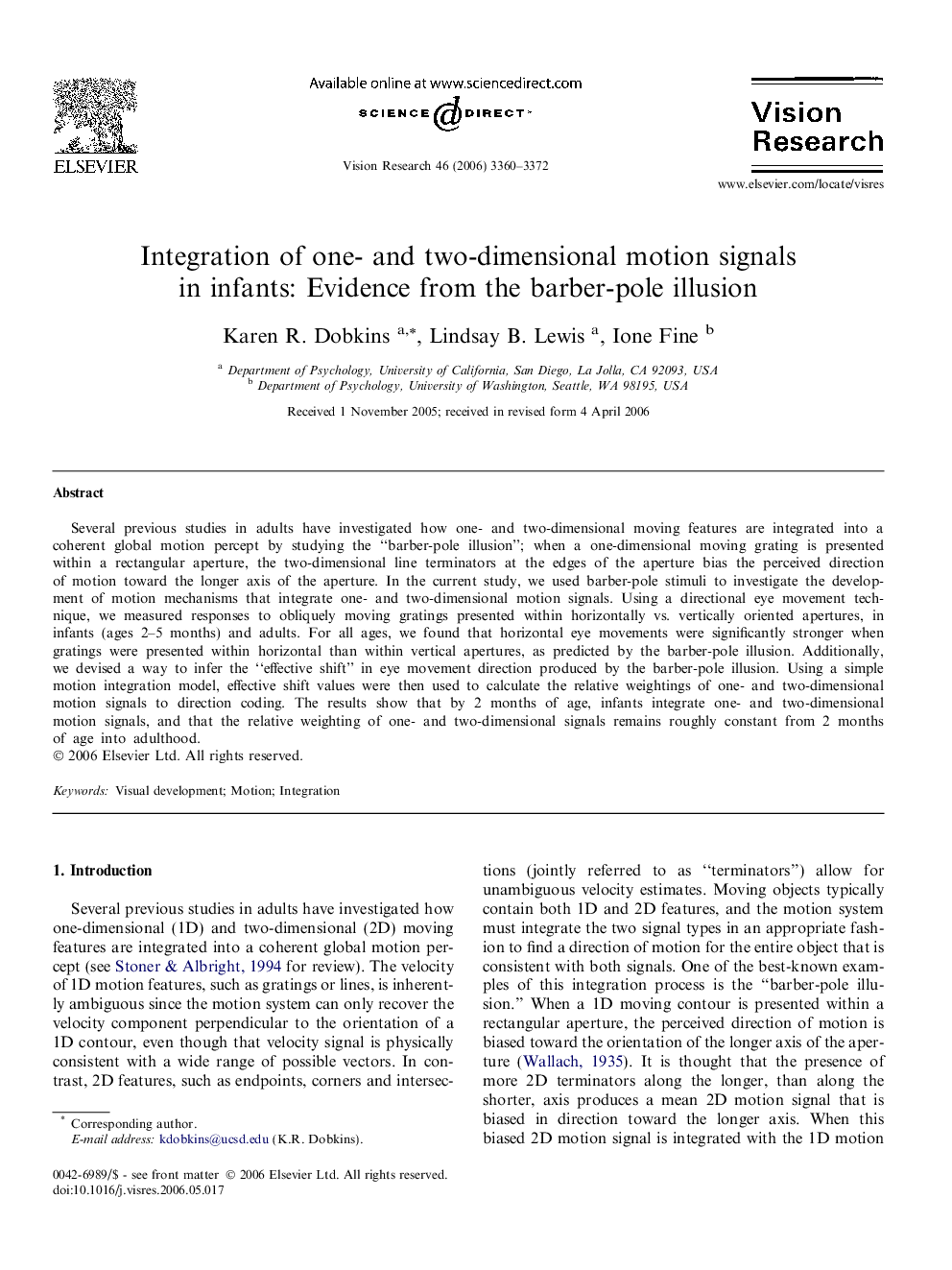| Article ID | Journal | Published Year | Pages | File Type |
|---|---|---|---|---|
| 4035984 | Vision Research | 2006 | 13 Pages |
Several previous studies in adults have investigated how one- and two-dimensional moving features are integrated into a coherent global motion percept by studying the “barber-pole illusion”; when a one-dimensional moving grating is presented within a rectangular aperture, the two-dimensional line terminators at the edges of the aperture bias the perceived direction of motion toward the longer axis of the aperture. In the current study, we used barber-pole stimuli to investigate the development of motion mechanisms that integrate one- and two-dimensional motion signals. Using a directional eye movement technique, we measured responses to obliquely moving gratings presented within horizontally vs. vertically oriented apertures, in infants (ages 2–5 months) and adults. For all ages, we found that horizontal eye movements were significantly stronger when gratings were presented within horizontal than within vertical apertures, as predicted by the barber-pole illusion. Additionally, we devised a way to infer the “effective shift” in eye movement direction produced by the barber-pole illusion. Using a simple motion integration model, effective shift values were then used to calculate the relative weightings of one- and two-dimensional motion signals to direction coding. The results show that by 2 months of age, infants integrate one- and two-dimensional motion signals, and that the relative weighting of one- and two-dimensional signals remains roughly constant from 2 months of age into adulthood.
